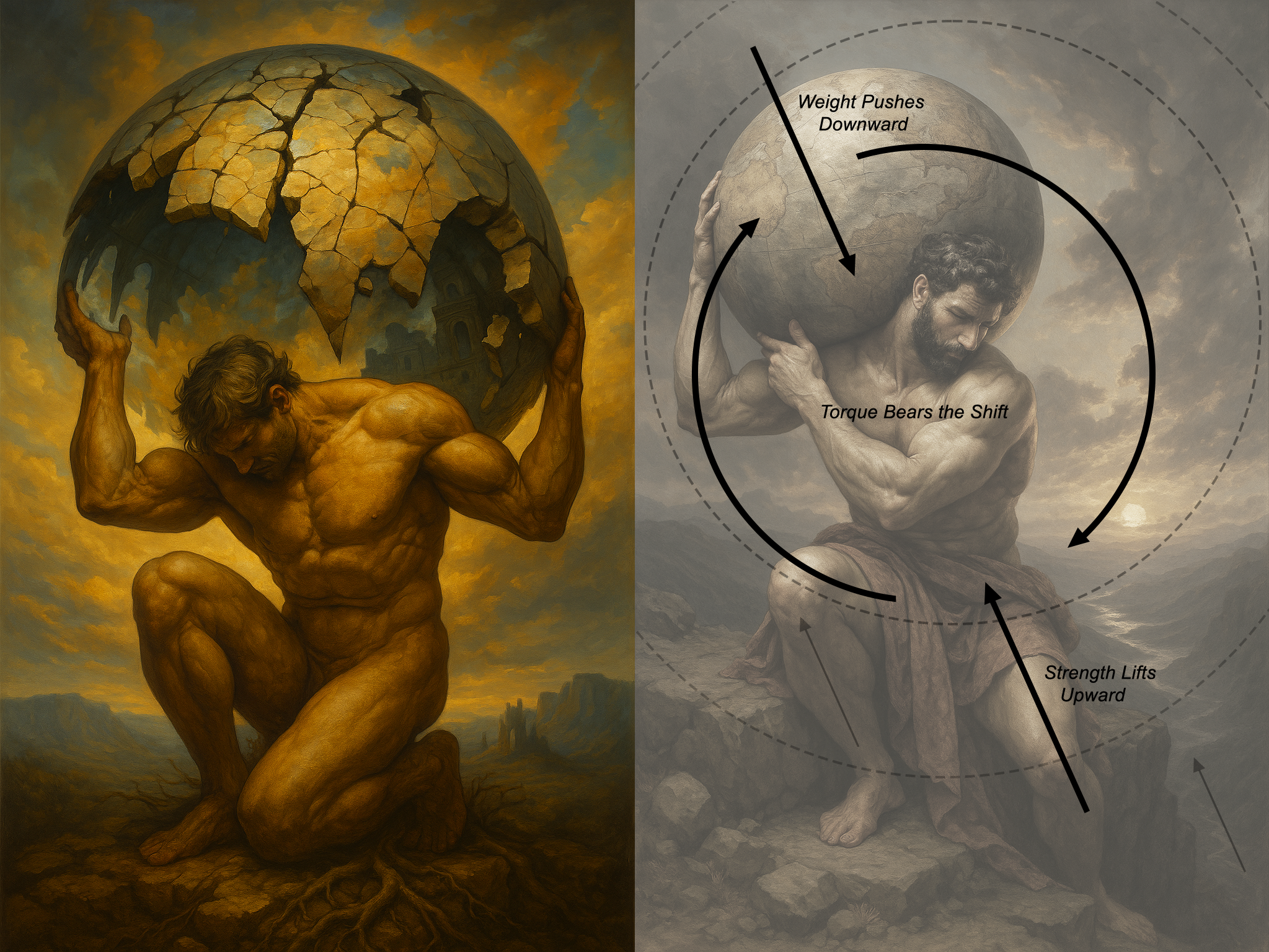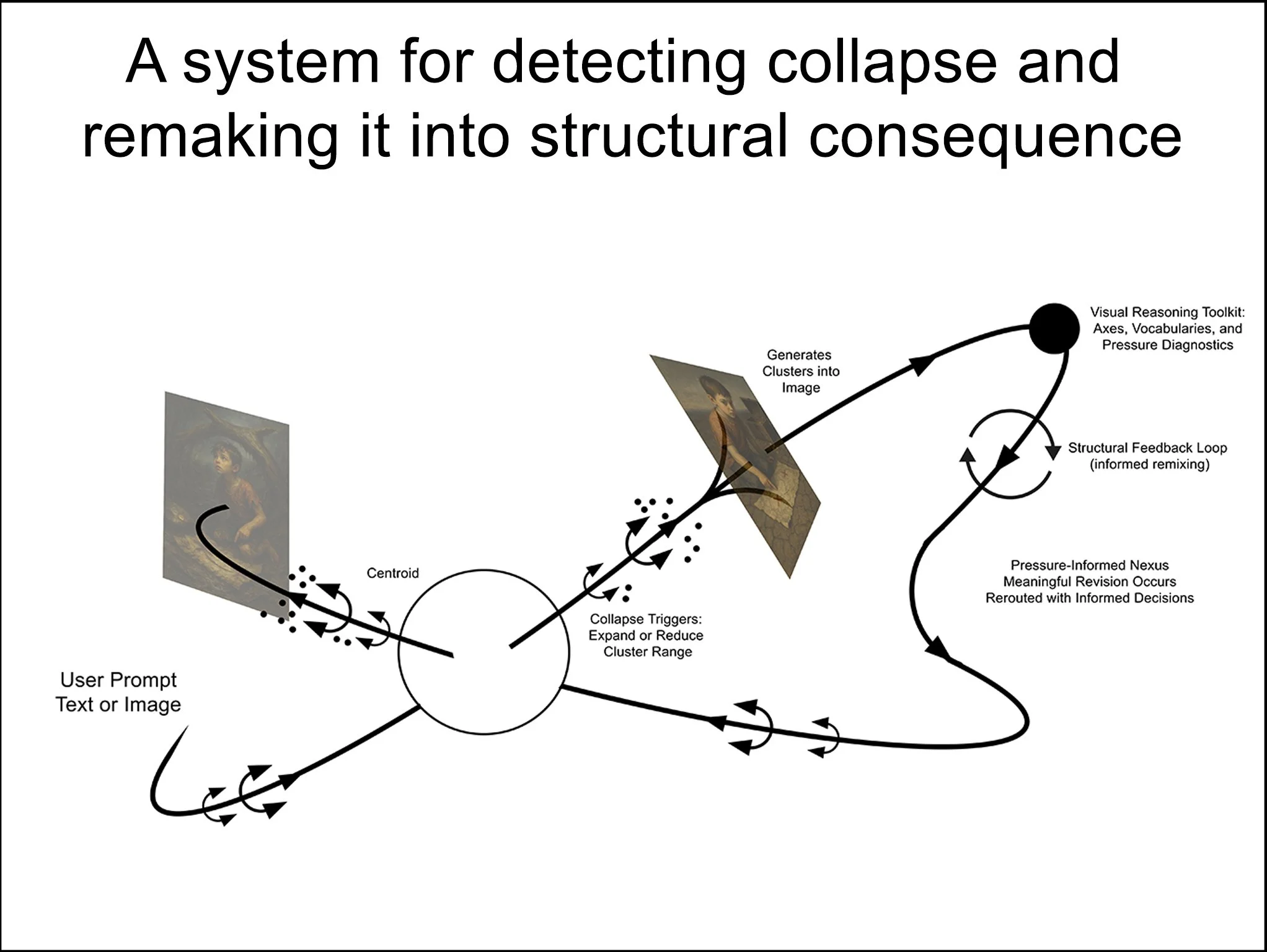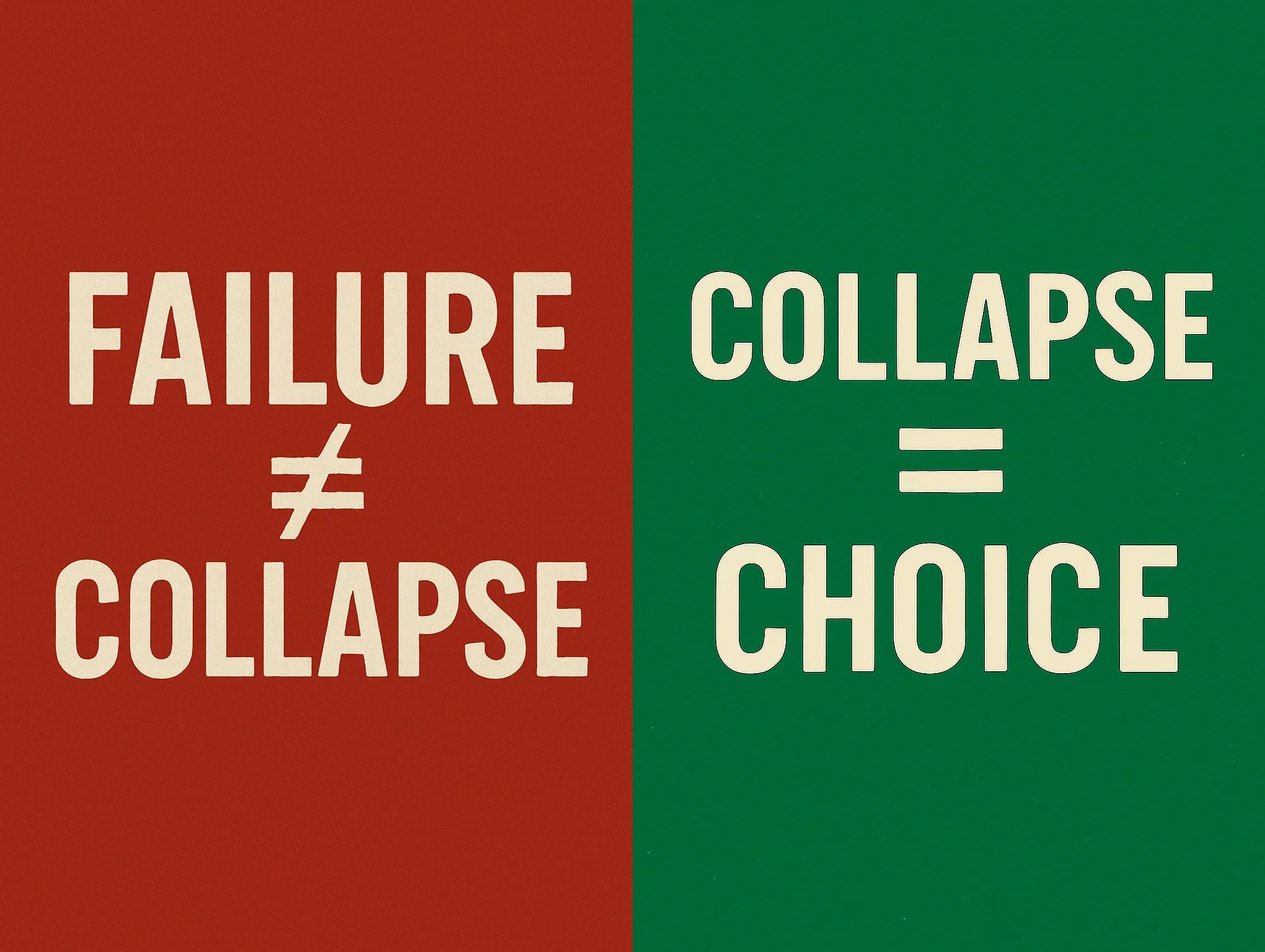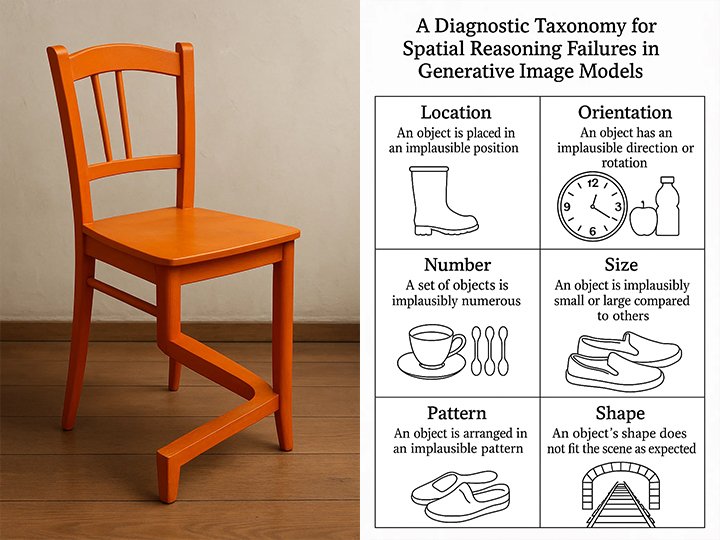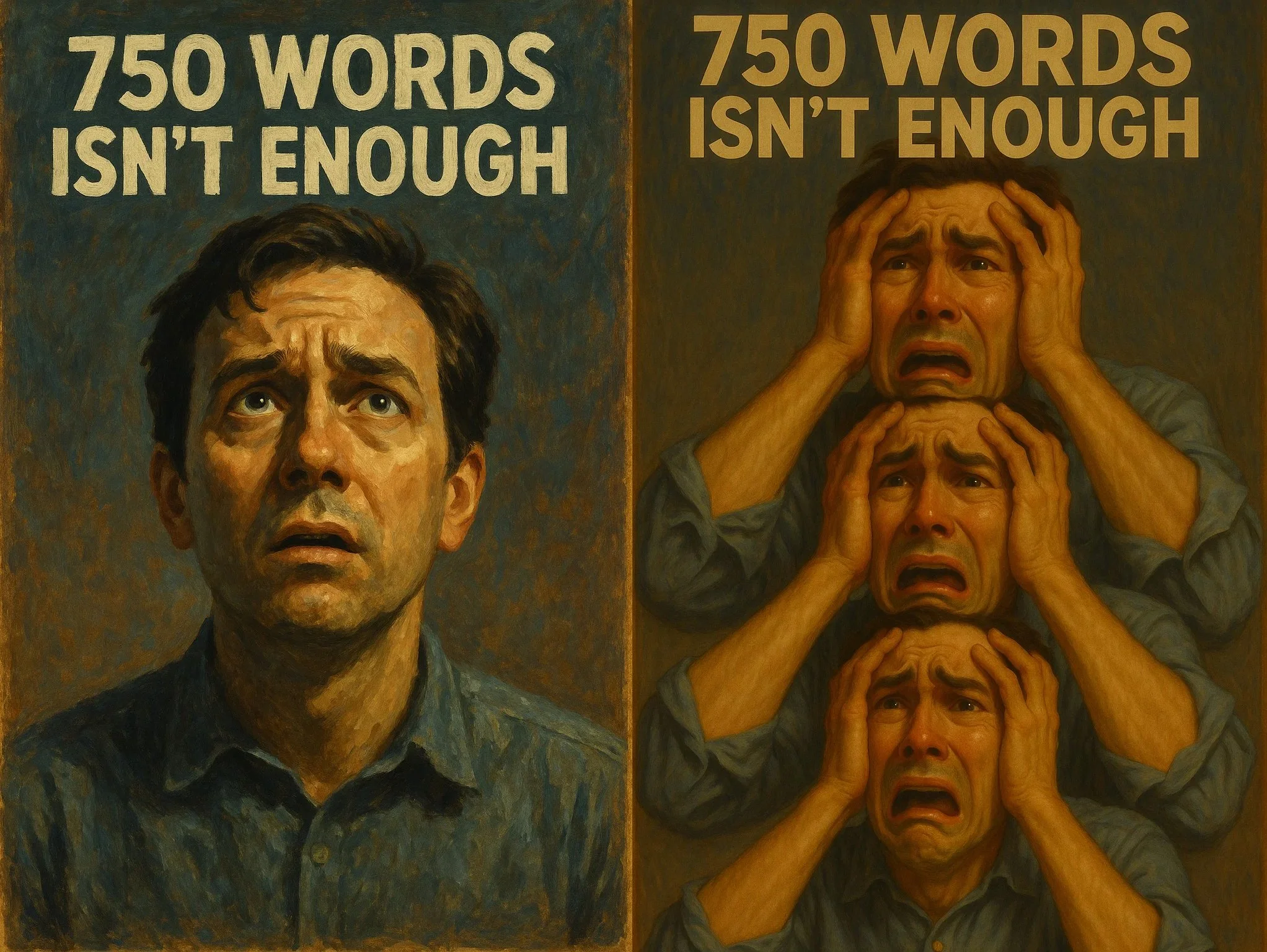A Theory Stack
Failure does not equal collapse. The center is the delta.
This document suite presents an evolving visual framework developed for interpreting and pressuring AI-generated imagery. At its core is the belief that visual intelligence is not measured by polish or aesthetic fidelity defaults, but by how an image holds tension, reveals structure, and survives recursive critique. These systems were developed through hands-on usage of the Visual Thinking Lens framework, image generation, comparative analysis, and prompt-based testing, less as formal proof, more as a toolkit of a refusal engine built for probing what images are made of, where they fail, how meaning breaks down under recursion and how they break the confines of any given intent.
Together, these documents outline a hybrid visual practice built on logic, constructs and code that doesn’t pretend that an image “knows” what it’s doing. It doesn’t. This work seeks structure, recursion or pressuring alternatives. Then offering a scaffold path to rebuild and replicate.
System Explainers
A Refusal Engine: Documents that help explain what the Visual Thinking Lens is and what it does.
Documentation that explains what this refusal and recursive system is, how it interrogates images and then rebuilds through visual language structure. The system is made up of individual engines and when brought together form a multi-agent refusal and reasoning engine. It reveals how generative models fail, correct, and can then restructure visual intent into structured, compositionally authored images. This framework is a prompt-native scaffold that diagnoses collapse, not decorating output.
Core Theory & Architecture
Defines the system’s architecture, logic, and grounding.
These documents show how the theory and architecture come together to make the engine(s) work, a shift from defaults to detecting breakdown to rebuilding. It treats failure as signal and collapse as structure, using recursive scoring to test how generative images behave under pressure. Visual consequence becomes the real benchmark, not fidelity. From foundational architecture to recursive visual intelligence. From constraint layer logic to structural tags across engines
Stability, Drift, and Collapse
Formalizing drift, collapse, and constraint basins as reproducible fields.
Generative models tend to collapse toward the statistical mean: subjects re-center, voids fill, and fracture smooths away, producing polished but predictable results. These are tools that control deformations, identify data basins of “artist” images, offer edge-case failure modes and provide ways to work within the drift. Learn to navigate around the gravity wells of latent space in constructive and exploratory ways that produce authored images to outright collapse.
LSI: Structural Diagnostics & Image Assessment
Image quality assessment/art evaluation tool showing where images hold or break.
LSI is a profiled composition “stress test” for AI images for artists and researchers as an instrument to study compositional stability in AI-generated images. Unlike metrics that measure similarity to training data (FID) or text-image alignment (CLIP), this focuses on structural principles that observe how compositions hold up under iteration or modification. Includes case studies and code links to GitHub.
The Visual Cognitive Load Index
The VCLI-G is a way to measure how much visual effort an image asks from a viewer. It looks at structure, balance, voids, and tension, but not at beauty or subject matter. In simple terms, it tells you whether a picture’s complexity is “earned” (coherent, intentional) or just “busy.” By combining geometric cues like curvature, layering, and void control, it turns what artists sense intuitively into a number you can track or compare. It’s like having a visible dial for visual tension and compositional focus.
Spatial Reasoning Failures & Diagnostics
Failure Morphologies
COMING SOON: A diagnostic taxonomy for identifying and classifying spatial reasoning breakdowns in generative images. Seven morphologies—Ghosted Overlap, VP Drift, Tonal Inversion, Columnar Cheat, Compression Stall, Contact Dissolution, Sequence Reversal—each map distinct cognitive fault lines in how models handle depth, occlusion, and geometric coherence. Includes metric signatures, detection protocols, and cross-platform benchmark framework.
Interpretability and Research Probes
Bridging Lens logic with AI interpretability and research tool use
Large models simulate visual coherence, but miss structural intent. Artists detect pressure and failure where machines default to surface gloss. How do we meet in the middle? These documents showcase logic constructs for AI, tools for tear downs, the Len’s native drift friendly scoring system, how recursive symbolic and spatial pressure can be applied and a recursive analysis of AI-generated imagery.
Artistic Extensions
Pushing into symbolic recursion, refusal, and design philosophy
Explore tension, refusal, and symbolic ambiguity as design tools. Test whether an image can hold together under symbolic and spatial pressure. This is documentation that identifies where form collapses and where tension sustains volume, offers new approaches to prompting that prioritizes structural tension over aesthetic description or shows how to track prompts that bend token behavior under structural pressure.
Proofs and Walkthroughs
Largely taken directly from threads, lightly edited to help with flow and to take out transitional default closing prompts.
Take walkthroughs with a single image across recursive iteration, learn about critical strain, recursive refusal, or refusal as structure. This suite of papers are the side steps and exploration of how to step out of the aesthetic center defaults.
—> Author’s Note: The terms and diagrams in various documents use metaphors as frameworks, not literal descriptions of AI architecture or technical claims. It is creating structured constructs of logic that help communicate intent to AI systems, create predictable prompt behaviors, and build a shared language for critique and manipulation of generative outputs. The diagrams and frameworks presented should be read as maps of logic and metaphor, tools for organizing thought and authorship, not blueprints of actual model internals.
In short: this work lives in the boundary between metaphor and method, where language helps turn abstract authorship into operational practice.


